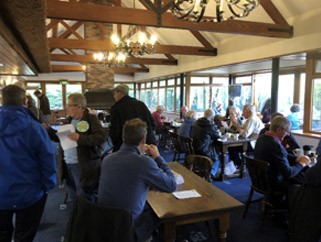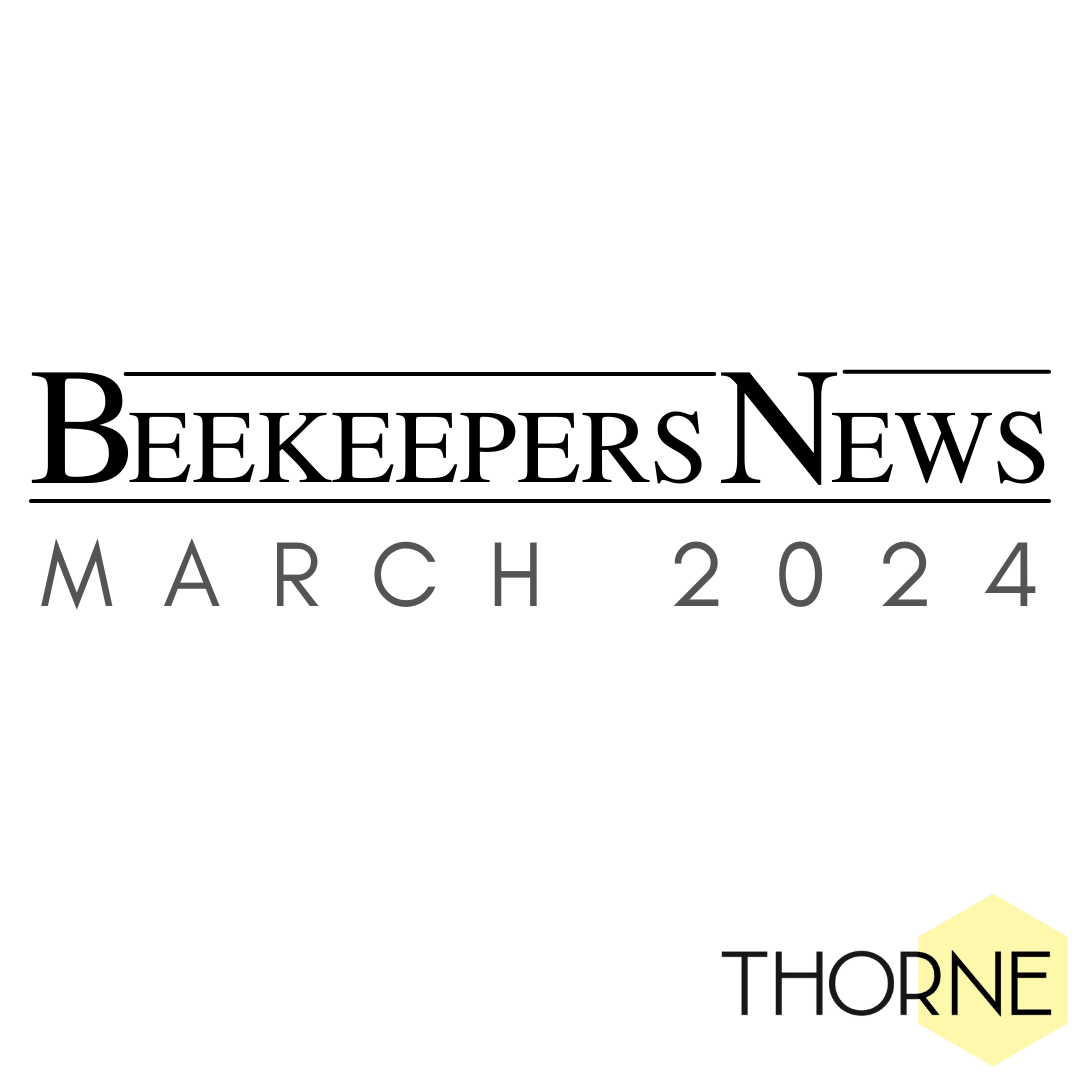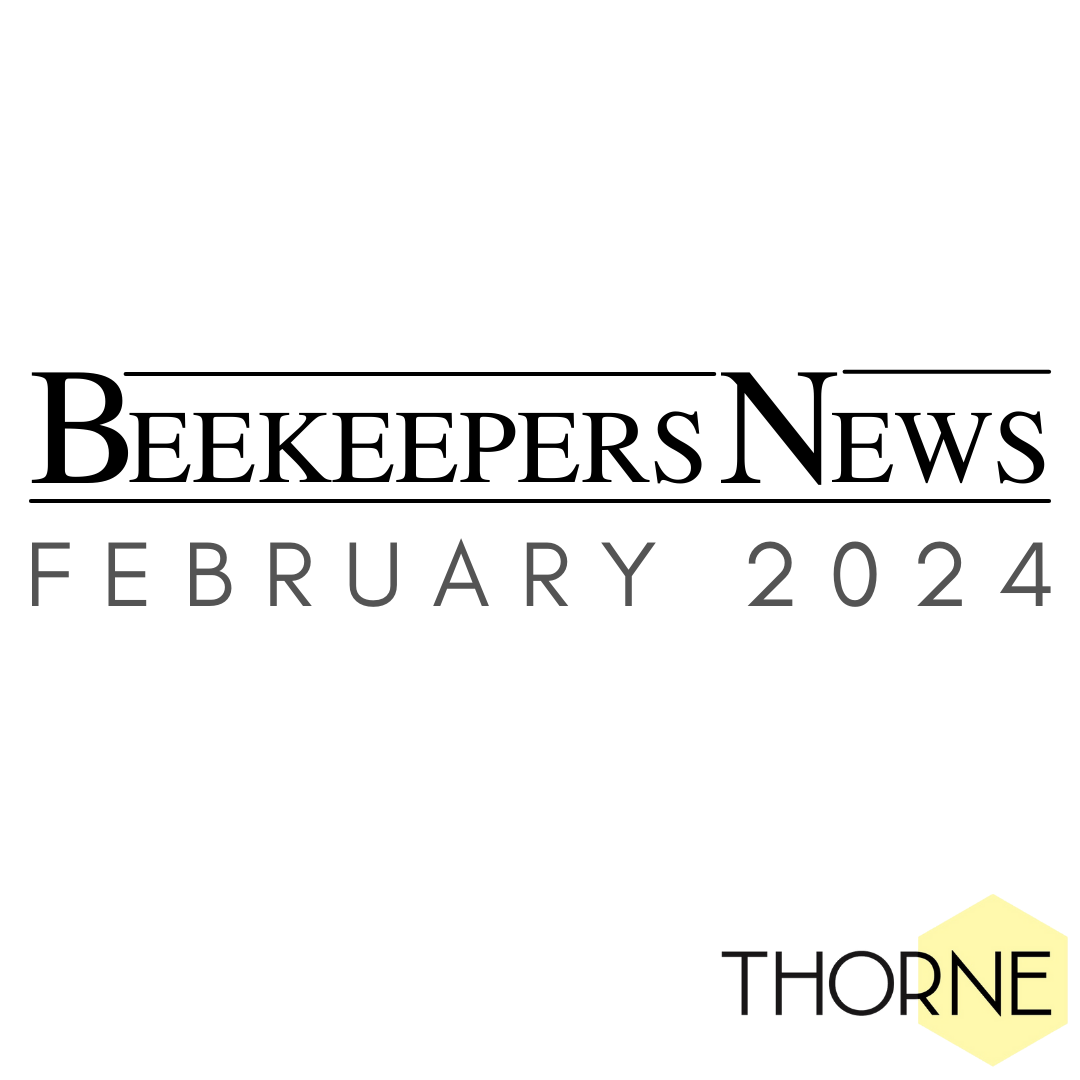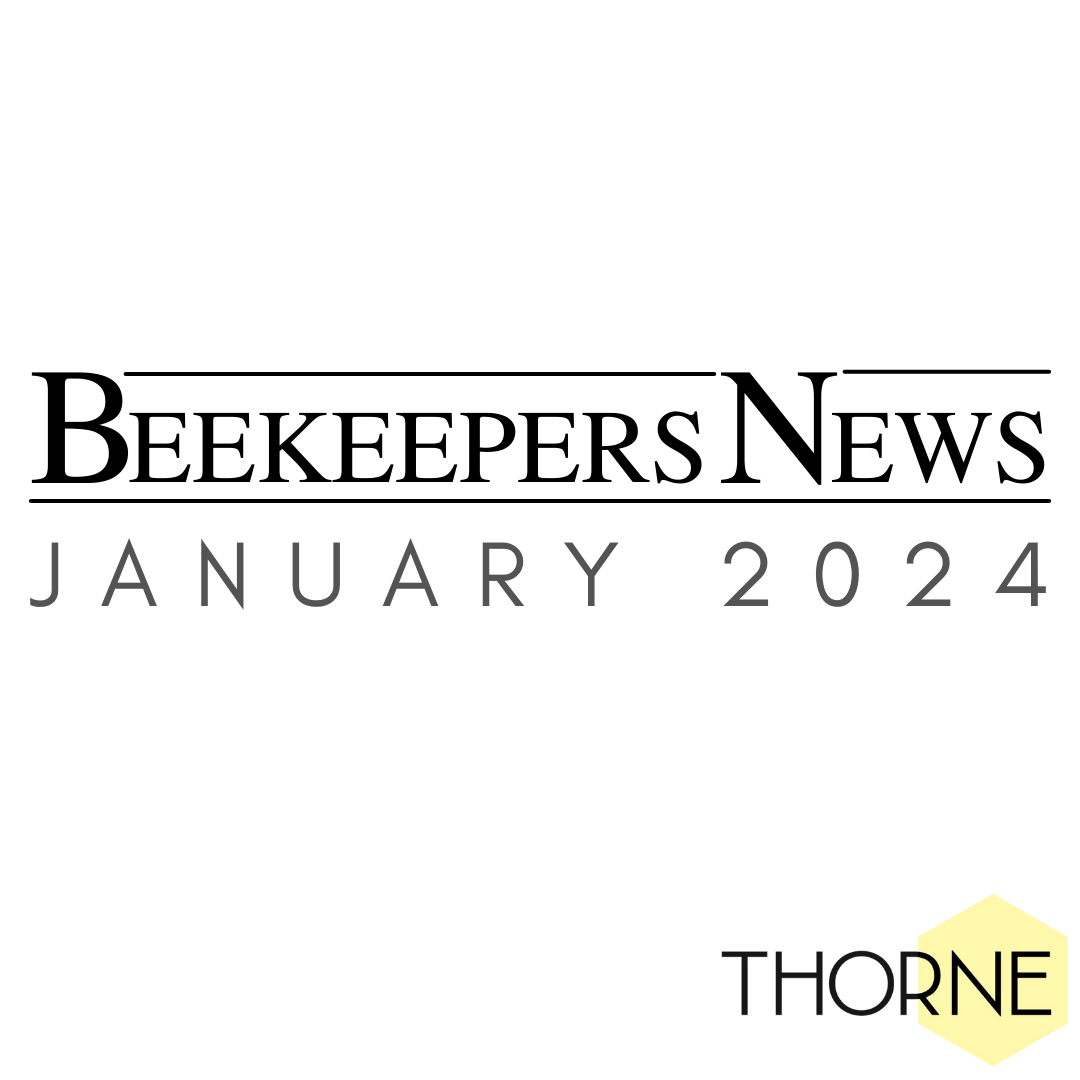October Roundup
Every October we have two very important events in the beekeeping calendar.
The first is always on the second Saturday in October and is our main sale event – our Rand Open and Sale day. Thank you to all the hundreds of customers for turning up on a cool and blustery October day; many of you were in the queue for the 3rds before 7am! We had well attended factory tours, a bustling restaurant and standing room only for Tony Jefferson's talk on swarm management. A few photos are below. As usual the Thorne team were fantastic and did us proud.
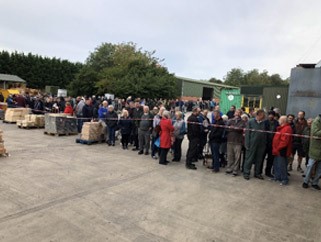


The final event of the year is the National Honey Show, held at Sandown Park in Esher. This is the most prestigious honey show in the world and people travel from all four corners of the globe to attend.
We really wanted to try something a little different with our stand this year. It was important to ensure our customers had a pleasant shopping experience and could pick up and handle the equipment, especially the new items we had on display. I hope most people think we succeeded! Congratulations to the amazing volunteers who make the National Honey Show so special.
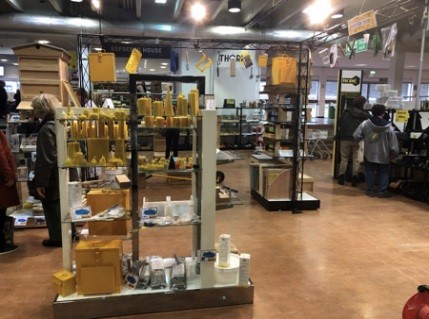
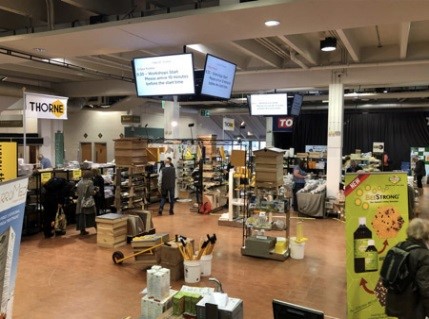
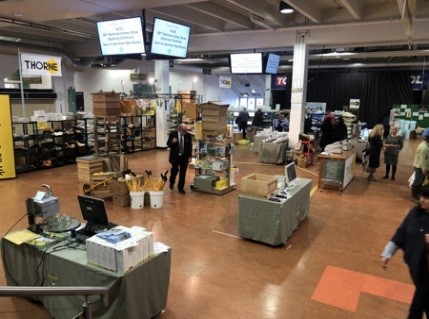
Ask the Expert
How to store supers
Supers can be stored wet or dry…
A super is termed wet if it is stored straight away after extracting honey – so it is not put straight back on to the hive.
A super is termed dry if it is put back on to the hive to be ‘cleaned up’ by the bees. Supers fitted with plastic foundation are best stored wet, as this helps to bribe the bees back on to them in the spring; if stored dry the bees are very reluctant to re-use plastic foundation.
The best way to dry the extracted comb is by placing the super above a crown board without escapes. The bees “rob” the honey down into the nest. Without the crown board the bees tend to consolidate the honey in situ in the super, rather than taking it below. The dry boxes can be treated in several ways… You can freeze the frames in the supers; 24hrs in the deep freeze will kill off eggs of wax moth. The boxes can then be wrapped in plastic bin liner bags and stacked. Do ensure top and bottom of the stack is mouse proof.
Certan (B401) is a biological control for wax moth… currently withdrawn; we are awaiting a replacement in the UK.
Stacks of supers can be sulphured – two strips put into a burner and lit produces sulphur dioxide poisonous to most living things. Do this exercise in an open well ventilated area. This process needs to be repeated every few weeks.
Finally, if you have a dry dusty barn, with lots of spiders…. A broad mesh to keep out the mice, but allow the spiders in… this forms a good biological control!
Failing any of these you can always render down your wax and trade it for fresh foundation in the spring, giving the young wax workers plenty to do and helping avoiding swarming.
Equiptment Focus
We took two entirely different machines to the National Honey Show this year and both created a huge amount of interest.
SWIENTY Table Top Filling Station.
Superb, quality made equipment from Swienty in Denmark. This filling station is ideal for the small scale commercial operation and hobby beekeeper alike. The system will cope with up to 200kgs of honey per hour. Honey can be pumped or gravity fed into the filling head. Accuracy is +/-1%. Anti-drip nozzle, hose and spare parts included. The jars automatically stop under the filling head as the turntable rotates, a tried and tested Swienty system.
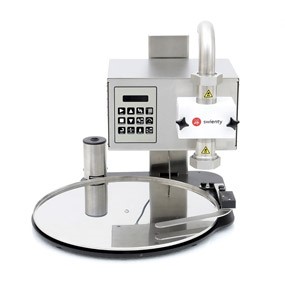
£2500.00.
Full instructions in a comprehensive guide included. Turntable is 450mm in diameter.
For more information and a short video click here.
SMART Weighing and Filling Machine
Made in China by one of our trusted suppliers, this pneumatic filling unit is incredible value for money. The hopper will hold 60+kgs and gravity feeds the filling head. All stainless steel construction with spare head for thicker honey. Foot pedal operation and complete with stand. The scales are fully adjustable and very accurate. Simply programme the weight required in the jar, the cut-off is clean and precise with no drips.
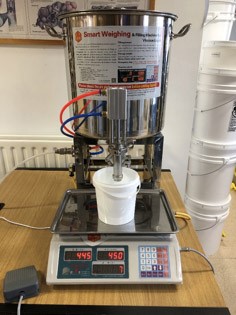
£595.00
A compressor providing 1.5 bar of pressure is required (not included but costs approx. £50).
For more information and a short video click here.
In addition to the two filling machines we had over 30 new pieces of beekeeping and candlemaking equipment on display at the National Honey Show.
One product new to us (but not new to the UK) is a product called Bee Strong. Manufactured by Bee Vital, Bee Strong is used all over the world. Add to spring feed to help the colony build up and then again in late summer to help produce healthy winter bees. Proven to help fight pathogens such as chalk brood and bacteria that causes foulbrood. We have a limited amount of 250ml bottles of Bee Strong at an introductory price of £12.50 – this is 50% off the retail price.
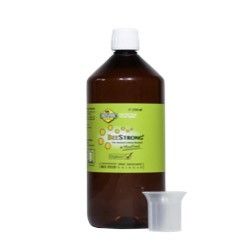
Beekeeping Blog
October 2019
October has been fairly wet, with a few cold, sunny days towards the end of the month. Bees are shutting up for winter, but they are not the only ones. As beekeepers, we must be careful with mice trying to nestle their way into hives for the winter. Mice can squeeze their way through most entrance gaps, but the mouseguard holes are just slightly too small for their skulls. Once inside a hive, mice can eat their way through stores and set up a nest in there. They can destroy combs, so it is best to avoid housing them if at all possible. Therefore, this month’s main job has been attaching mouseguards to the front of all the hives. This can be quite a fiddly task, so we find that using the Snowley mouseguard magnet with a pot of drawing pins speeds things up. The magnet is pictured here with a drawing pin attached to the end, ready to be pushed in.
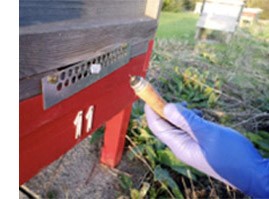
The activity of attaching mouseguards can also encourage bees to start pouring out the front of the hive, which really slows the job up (never mind the stings that go with it). For this reason, we did the job just after 4pm and as you can see from this picture, the sun was just about going down on a lovely cold, sunny day here at Rand.

This meant we barely had any disturbance from the bees and could get the job done quickly. We also have a few hives which have been placed out in preparation for next year, for artificial swarms/increases etc. To stop anything hibernating in these over winter, we have closed the entrances entirely, using entrance blocks, as pictured here: As there have been confirmed discoveries of Asian Hornets this year in the UK, we have continued to check the Asian Hornet traps. Fortunately, we have not found any of this invasive species, so all other species have been set free. The chance of catching an Asian Hornet will decrease as we go into winter, so we would be unlikely to find anything now. However, we will keep checking, just in case! Moving into next month, we will be doing some hefting of the hives to check on stores. As we move into the colder temperatures, our main priority will be to keep them stocked up and provide the bees with any extra food, should they require it.
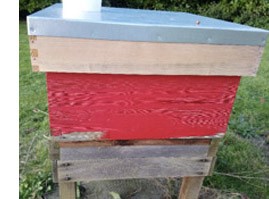
Bees for Development Update
Breaking down barriers with beekeeping in Uganda
People with disabilities in Uganda have few options to make a living, are marginalised and often left out by their communities. Bees for Development is bringing the benefits of beekeeping to people with disabilities, so that they too can meet their needs and achieve their aspirations of having economically successful livelihoods. Read about the work: "Beekeeping to empower people with disabilities in Uganda" here. The project is run in partnership with The Uganda Apiculture National Development Organisation (TUNADO), with funding from The National Lottery Community Fund.
The Big Give
The team at Bees for Development need your support during one special week in December (3rd to the 10th) when every donation you make will be doubled - to help their work in Ethiopia. There will be more details in next month's edition of this Newsletter.
Monty Don in Monmouth Viewers of BBC Gardener's World may know that presenter Monty Don has bees at Long Meadow, and there will be a unique opportunity to hear him speak in Monmouth on the 30th of January 2020, when he is going to be interviewed by Bill Turnbull. All proceeds from the evening will go to Bees for Development. Ticket booking will open soon. Check www.beesfordevelopment.org for news.
National Honey Show
The National Honey Show was a huge success, once again this year. There were bumper entries to the competitive classes, the display was stunning, and winners, especially those from far away, and young beekeepers entering for the first time, were over the moon. A highlight of the show was the show opened by Claire Waring, the retiring editor of Bee Craft. Bee Craft spectacularly celebrated their centenary with their fascinating knitted display hive, folk music on saving the bees by fiddle player Rowan Piggott and his companions on the Friday, and the magnificent cake by Christa Lewis which was admired, then enjoyed by all on the Saturday. Our favourite traders were joined by some new exhibitors and educational displays this year. The National Botanical Garden of Wales displayed their wonderful Stitchers’ “Brood Frame”; and Wisley displayed a range of plants in flower at this time of year.
Our lectures were all packed as usual and the workshops enthusiastically attended by smaller groups wanting to learn more about their subjects from microscopy to making beeswax wraps.
The Saturday children’s “Sticky Festival” attracted an attentive audience of young, interested participants who enjoyed rolling candles, colouring, asked lots of questions and listened to stories and poems performed by artists in the afternoon.
If you missed the show this year, be sure to note the date for next year’s show: Thursday 22nd to Saturday 24th October 2020 at Sandown Park Racecourse, Esher, Surrey KT10 9RT.


